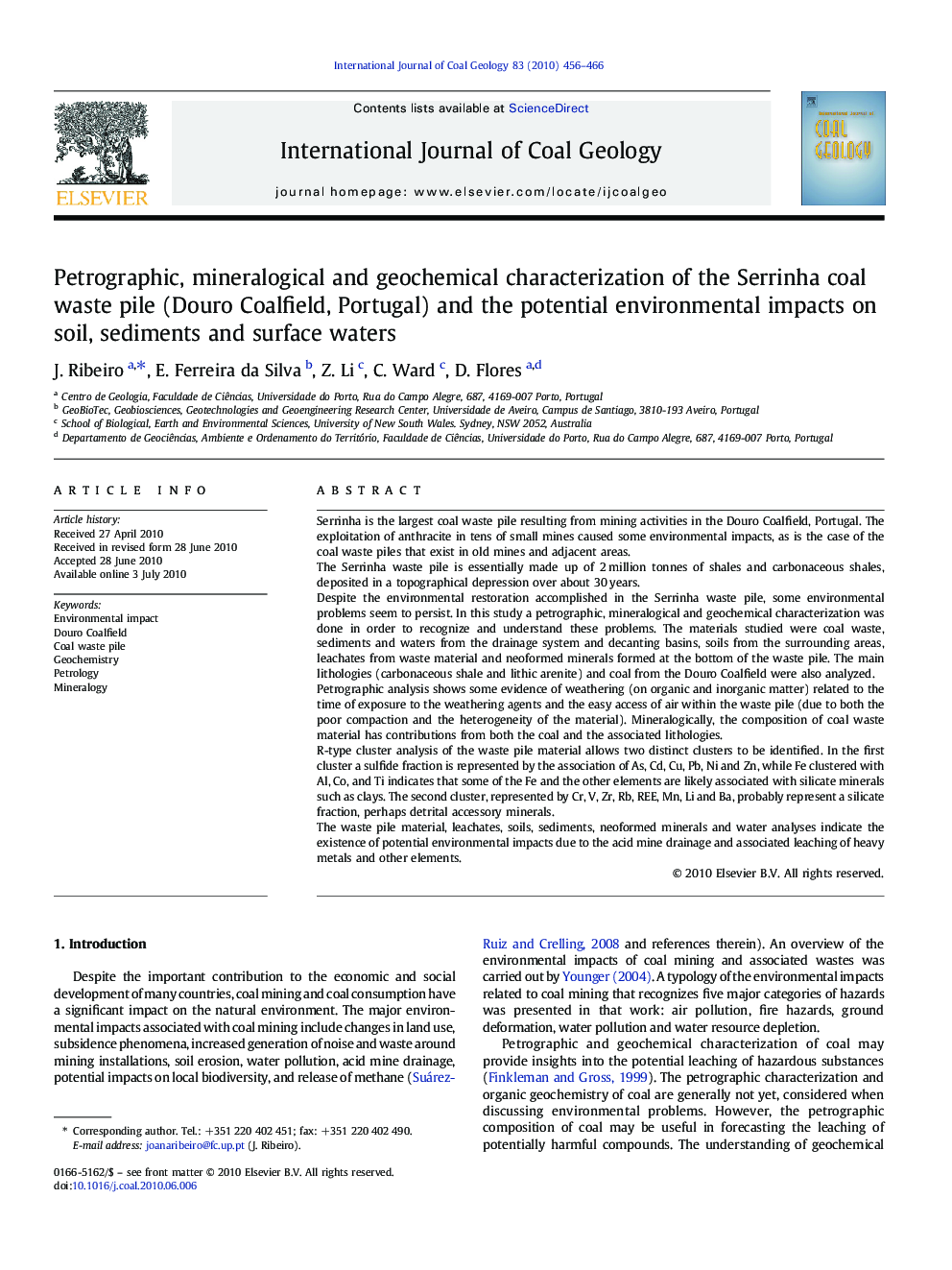| کد مقاله | کد نشریه | سال انتشار | مقاله انگلیسی | نسخه تمام متن |
|---|---|---|---|---|
| 1753744 | 1522619 | 2010 | 11 صفحه PDF | دانلود رایگان |

Serrinha is the largest coal waste pile resulting from mining activities in the Douro Coalfield, Portugal. The exploitation of anthracite in tens of small mines caused some environmental impacts, as is the case of the coal waste piles that exist in old mines and adjacent areas.The Serrinha waste pile is essentially made up of 2 million tonnes of shales and carbonaceous shales, deposited in a topographical depression over about 30 years.Despite the environmental restoration accomplished in the Serrinha waste pile, some environmental problems seem to persist. In this study a petrographic, mineralogical and geochemical characterization was done in order to recognize and understand these problems. The materials studied were coal waste, sediments and waters from the drainage system and decanting basins, soils from the surrounding areas, leachates from waste material and neoformed minerals formed at the bottom of the waste pile. The main lithologies (carbonaceous shale and lithic arenite) and coal from the Douro Coalfield were also analyzed.Petrographic analysis shows some evidence of weathering (on organic and inorganic matter) related to the time of exposure to the weathering agents and the easy access of air within the waste pile (due to both the poor compaction and the heterogeneity of the material). Mineralogically, the composition of coal waste material has contributions from both the coal and the associated lithologies.R-type cluster analysis of the waste pile material allows two distinct clusters to be identified. In the first cluster a sulfide fraction is represented by the association of As, Cd, Cu, Pb, Ni and Zn, while Fe clustered with Al, Co, and Ti indicates that some of the Fe and the other elements are likely associated with silicate minerals such as clays. The second cluster, represented by Cr, V, Zr, Rb, REE, Mn, Li and Ba, probably represent a silicate fraction, perhaps detrital accessory minerals.The waste pile material, leachates, soils, sediments, neoformed minerals and water analyses indicate the existence of potential environmental impacts due to the acid mine drainage and associated leaching of heavy metals and other elements.
Research highlights
► Integrative study of coal waste, sediments and waters from drainage system and decanting basins, soils from surrounding areas, leachates from waste material and neoformed minerals from a coal waste pile.
► Weathering evidences on organic and inorgnaic matter with subsequent formation of secondary minerals.
► Occurrence of acid drainage and associated leaching of heavy metals and other elements.
Journal: International Journal of Coal Geology - Volume 83, Issue 4, 1 September 2010, Pages 456–466